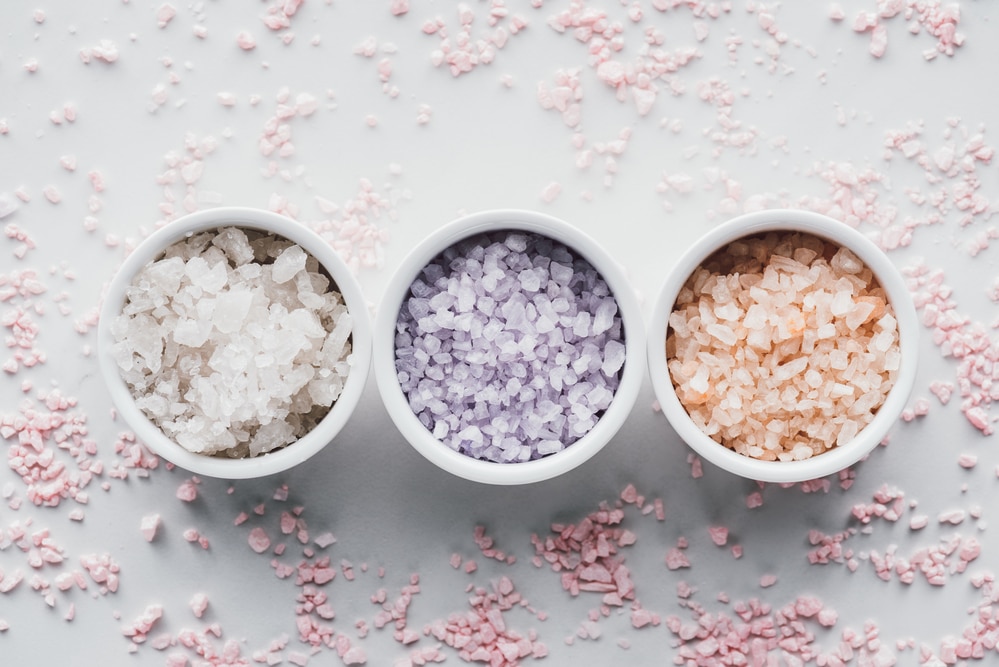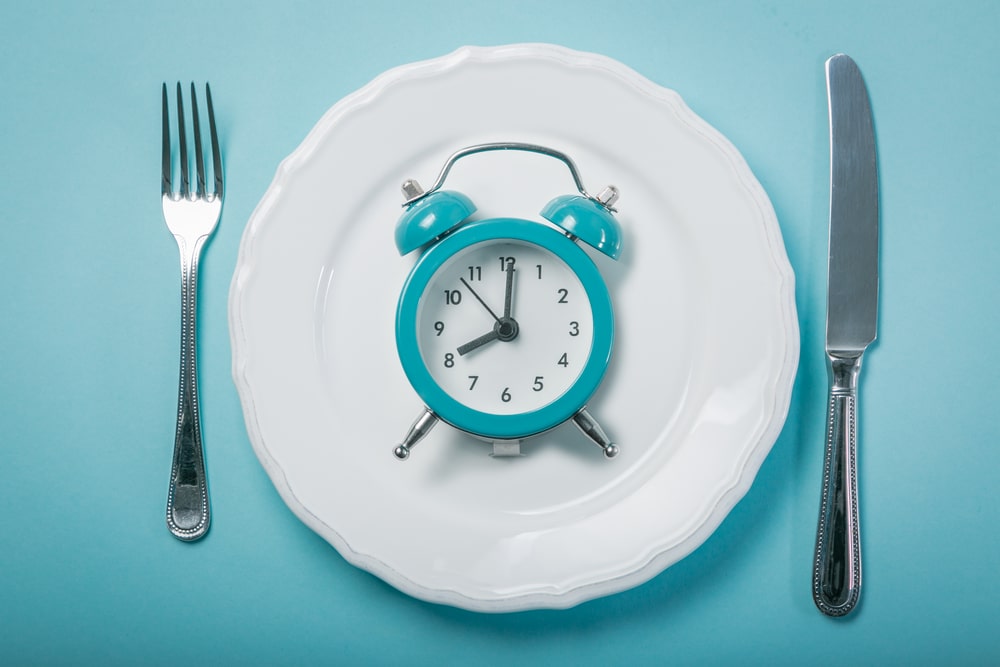Fasting has been part of religious and cultural traditions for centuries. Yet in recent years, nutritionists and health experts have proven that water fasting — reducing all food and drink to only H₂O for a short time — also has numerous health benefits.
Not eating for a period of time can be challenging both physically and mentally, but the short and long-term wellness benefits may outweigh the temporary discomfort. Here’s a look at what water fasting is and how it has the potential to improve a range of health conditions.
What Is Water Fasting?
Water fasting is a regimen where an individual restricts all food and drink intake except for water. Water fasting can be done for either short or long periods of time.
Some people may engage in a day fast on only water, while others water fast for three days. Health professionals don’t recommend fasting for more than five days, especially if it’s your first fast. Water fasting can also be done as part of a different fasting regimen like intermittent fasting, as standard intermittent fasting diets allow for the intake of water.
According to Frank Hu, nutrition department chair at Harvard, intermittent fasting arose from research on animals, which showed that it can lower the risk of cancer and reduce the side effects of growing older. The potential anti-aging effects of fasting are just one reason why so many people are trying out the trend.
Benefits of Water Fasting
The benefits of water fasting abound, though not all claims have been substantiated by research. Here’s a look at the proven health benefits of water fasting, including how it can support weight loss, blood sugar maintenance, and relief from a variety of health problems.
Autophagy
Autophagy is a natural bodily process by which the cells clean themselves of accumulated waste materials. Sometimes, cells remove these molecules by recycling and reusing them, and other times they eliminate these materials all together.
Autophagy has been shown to improve liver function, especially in instances of drug and alcohol-related damage. Other studies show that autophagy boosts immunity by reducing toxins in the body and clearing out potential disease-causing agents. Without autophagy, research suggests that muscle degeneration and weakness can occur.
Autophagy has also been shown to reduce inflammation, meaning it can have a potential effect on genetic and inherited diseases, as well as autoimmune diseases.
Weight Loss
Many people turn to water fasting as a quick and effective way to lose body weight. But does it really work? Research suggests yes — but only for a short amount of time.
A study on people of average weight showed that water fasting every other day increased the rate of fat oxidation, meaning it burned fat more quickly. However, these subjects were also faced with consistently high levels of hunger. This suggests that it’s more realistic to maintain this diet for a short period of time.
Blood Pressure and Diabetes
One scientific study on prediabetic men showed that intermittent fasting could help increase insulin sensitivity. Since low insulin sensitivity leads to an increase in blood sugar levels — increasing a person’s risk for type 2 diabetes — this increased sensitivity can reduce a person’s diabetes risk.
Moreover, the same study showed that intermittent fasting lowers blood pressure, helping reduce the risk of heart disease. Whether or not you’re already at risk for diabetes, such results prove that water fasting may support an increased resiliency against the condition.
Side Effects of Water Fasting
The greatest risk of anyone who water fasts is refeeding. While refeeding syndrome is rare, it can arise as a side effect of fasting for a long period of time when reintroducing food.
Refeeding syndrome is a dangerous and potentially deadly condition that happens when your body experiences dramatic, rapid changes in electrolytes and nutrients after not eating. It can cause fatigue, heart failure, dizziness, high blood pressure, seizures and, rarely, death.
Prevent Refeeding Syndrome
So how can you prevent refeeding syndrome and effectively reintroduce food post-fast? The greatest risk factors are having a preexisting eating disorder, such as anorexia nervosa, or having a history of alcoholism. People with these disorders should avoid water fasting.
Opting for a one-day juice or broth cleanse can ensure that you’re still getting nutrients in your body while enjoying the health benefits of fasting. Having been on a strict water fast for five or more days can also put you at risk of refeeding syndrome.
If you don’t have a preexisting condition that can put you at risk, minimizing your fast to 72 hours or less is the best way to prevent this condition to occur. You can also avoid breaking your fast with high-carb, high-sugar meals. Instead opt for something high in protein and fat, and maintain a steady intake of electrolytes by drinking mineral water and adding himalayan salt to your water.
Water Fasting Tips
While the rules for a water fast are relatively easy, there are a few important things to keep in mind in order to have a safe and effective experience.
Drink Enough Water
Many people who try this type of fast neglect to drink enough water throughout the day, leaving them feeling dehydrated. Since most foods contain water, reducing your food intake also reduces your overall hydration.
Snap Kitchen dietician Samantha Presicci suggests that, while the amount of water intake differs between people, women should aim to drink between two and two and a half liters of water and men should try to drink three liters during a water fast.
Presicci adds that it’s a good idea to incorporate water into your daily schedule to ensure you’re drinking enough throughout the day. Reaching for water during regular meal times will keep you hydrated while warding off headaches, bloating, and hunger related to the lack of food intake.
Balance Electrolytes
Research shows that individuals who water fast experience depletion of crucial nutrients like potassium and sodium.
Since potassium and sodium are essential for staying hydrated and maintaining proper organ function, anyone water fasting for a prolonged period of time may want to consider ingesting some whole foods to maintain balance. Eating a small amount of food, like fruits, vegetables, or something high in protein, can curb hunger and keep your electrolytes balanced.
However, it’s important not to indulge in a large amount of food after fasting. While it’s tempting, it may make it harder to achieve your long-term weight-loss goals and leave you feeling fatigued and bloated. Instead, introduce small meals when returning to your normal eating habits. Common signs that you’re low on electrolytes during fasting include fatigue, dizziness, cramps and headaches.
Stay Busy, But Keep It Mild
Water fasting is challenging for the mind and body, but staying busy can help you take your mind off the hunger you may be feeling. For example, meditating can calm your mind so that you’re less focused on and consumed by physical sensations. Mild exercise is also great for keeping yourself busy, and can ward off fatigue.
Be careful about exercise: Amping up your training routine during a water fast can lead to adrenal fatigue, which can cause long-term damage to the body. Since a water fast can be stressful on your internal systems, it’s important that you’re not adding additional stress with high-intensity exercise. Light exercises like yoga, pilates, and walking are a great way to get your body moving in a low-impact way.
Water Fasting for Mental and Physical Health
Fasting is certainly a popular practice, but it isn’t something to be tried at random. Understanding why you’re fasting — and placing an intention behind it — is important for staying mindful when beginning a new eating pattern. Anyone who wants to start water fasting should have a clear understanding of both the benefits and risks.
By starting a new fasting routine mindfully, you can potentially boost immunity, lose weight, and increase resiliency against common health problems. As with any new dietary regimen, contacting a healthcare professional is the best way to be safe during the process. A medically supervised water fast has the potential to transform your life and give you greater insight into your long-term wellbeing.






















